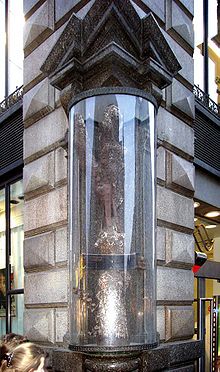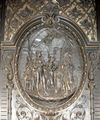Philip of Swabia was a member of the House of Hohenstaufen and King of Germany from 1198 until his assassination.

The Graben is one of the most famous squares in Vienna's first district, the city center. It begins at Stock-im-Eisen-Platz next to the Palais Equitable, and ends at the junction of Kohlmarkt and Tuchlauben. Another street in the first district is called Tiefer Graben. It is crossed by Wipplinger Straße by means of the Hohe Brücke, a bridge about 10 meters (33 ft) above street level.

The Stephansplatz is a square at the geographical centre of Vienna. It is named after its most prominent building, the Stephansdom, Vienna's cathedral and one of the tallest churches in the world. Before the 20th century, a row of houses separated Stephansplatz from Stock-im-Eisen-Platz, but since their destruction, the name Stephansplatz started to be used for the wider area covering both. To the west and south, respectively, run the exclusive shopping streets Graben and Kärntner Straße. Opposite the Stephansdom is the Haas-Haus, a piece of striking modern architecture by Hans Hollein. Although public opinion was originally skeptical about the combination of the mediaeval cathedral and the glass and steel building, it is now considered an example of how old and new architecture can mix harmoniously .
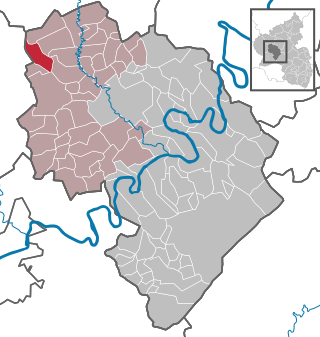
Eisenschmitt is an Ortsgemeinde – a municipality belonging to a Verbandsgemeinde, a kind of collective municipality – in the Bernkastel-Wittlich district in Rhineland-Palatinate, Germany.
The history of the Jews in Vienna, Austria, goes back over eight hundred years. There is evidence of a Jewish presence in Vienna from the 12th century onwards.
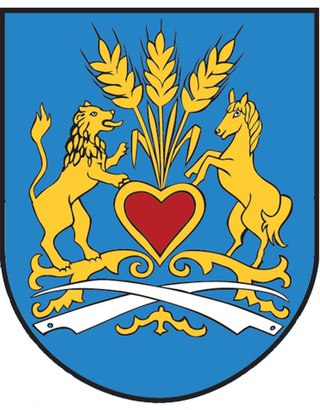
Inzersdorf was before 1938 an independent municipality, and is now a part of the 23rd Viennese district Liesing.
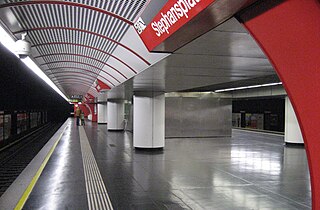
Stephansplatz is an important destination and interchange station in the Vienna U-Bahn system. It is located under the Stephansplatz and is served by lines U1 and U3. It is located in the Innere Stadt district.

The Palais Equitable is a mansion in Stock-im-Eisen-Platz in the Innere Stadt of Vienna, Austria, that was built in the 19th century for The Equitable Life Assurance Society of the United States and that incorporates the Stock im Eisen on one corner.

The Eisenkammer Pirna was an Electoral Saxon institution with the task of distributing and allocating the iron products within its area of responsibility (Revier), the Pirna Iron Mining District. It was founded in 1472 and existed until 1686. It had its seat in the house Am Markt 10, the present town community hall, in the Old Town (Altstadt) of Pirna.
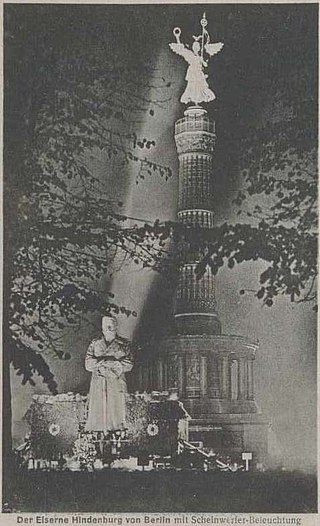
Nail Men or Men of Nails were a form of propaganda and fundraising for members of the armed forces and their dependents in the Austro-Hungarian Empire and the German Empire in World War I. They consisted of wooden statues into which nails were driven, either iron (black), or coloured silver or gold, in exchange for donations of different amounts. Some took different forms, including pillars, shields or local coats of arms and crosses, especially the Iron Cross, and in German there are a variety of alternate names for them, including Wehrmann in Eisen or eiserner Wehrmann, Nagelfigur, Nagelbild or Nagelbrett, Wehrschild and Kriegswahrzeichen. The most famous were the original Wehrmann in Eisen in Vienna and the 'Iron Hindenburg', a 12-metre (39 ft) statue of Hindenburg adjacent to the Victory Column in Berlin.
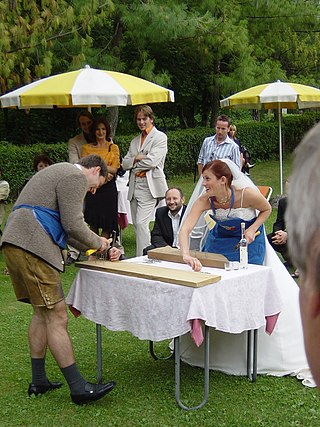
Nagelbalken is a competition in which participants compete against each other to drive nails into a wooden beam. It can be found as a game of leisure at events and festivals, often for children and as a wedding custom.

Dr. Emil Mayer was an Austrian photographer, lawyer, inventor, and businessperson.
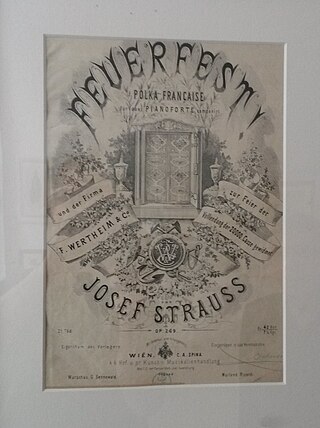
Feuerfest! ('Fireproof!'), Op. 269, is a polka-française composed by Josef Strauss in 1869.

The Erla Ironworks has its origins in one of the oldest hammer mills in the Upper Ore Mountains, which was first recorded in 1380 as the Hammer in der Erl, making the ironworks the oldest existing business in the German state of Saxony.

Georg Decker was an Austro-Hungarian portrait artist.

Ludwig Julius Eisenberg was an Austrian writer and encyclopedist. He wrote a lexicon of stage artists, among other publications.

Alfred Hofmann was an Austrian medallist, gem-cutter and sculptor in wood, bronze, limestone, marble, cameo and other materials. Works by him are in the collections of the Museum of Military History, the Kunsthistorisches Museum, the Österreichische Galerie Belvedere and Wrocław City Museum. From 1906 until 1936 he was a member of the Vienna Secession and the Vienna Künstlerhaus. He was also a member of the Deutscher Künstlerbund.
Louise Karolina Müller, néeLudovika Müller was an actress and operatic soprano. She appeared mostly in soubrette roles, but is known for performing as Marzelline at the premiere of Beethoven's Fidelio on 20 November 1805.

Karl Haffner (pseudonym), real name Karl Schlechter, was a German dramaturge.

The Budweis-Linz-Gmunden Horse-Drawn Railway was the second public railway line to be opened in mainland Europe. It opened in stages between 1827 and 1836, and principally served the transport of salt from the Upper Austrian Salzkammergut to Bohemia.
